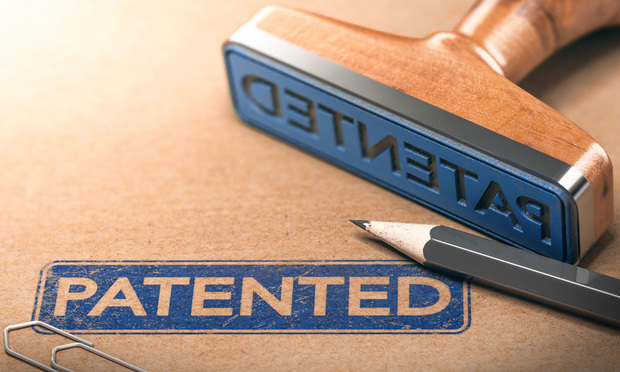Features

Protecting Your Patent: How a Vet-Owned AI Company Safeguarded Its IP
Military-owned businesses often possess unique technological advantages derived from years of research, development, and practical application. One veteran-owned company’s journey — combined with a patent attorney’s experience preparing and filing patent applications — provides valuable insight into what veterans should do to safeguard their intellectual property.
Features

Swearing Behind: Overcoming Asserted Prior Art in PTAB Proceedings
Part One of a Two-Part ArticleThis two-part article discusses the various legal and evidentiary requirements for antedating and removing prior art that patent owners should consider when their pre-AIA patents are challenged based on a prior art publication or activity that is not otherwise subject to a statutory bar. It also addresses considerations for petitioners to consider when developing their initial and ongoing invalidity strategies. Part One leads off with a discussion of the evidentiary requirements for proving earlier invention, conception and diligence and actual reduction in practice.
Features

Post-Amgen Patent Playbook: Section 112 Under the Microscope
The Supreme Court’s unanimous 2023 decision in Amgen v. Sanofi reshaped enablement analysis for broad genus patent claims. In the wake of Amgen, broad functional claims have been scrutinized rigorously for sufficient disclosure. This article summarizes key post-Amgen decisions, which illustrate how patent drafters and litigators must navigate the fine line between claim breadth and disclosure depth in the post-Amgen era.
Features

Writing Strong Antibody Claims: Avoiding or Addressing USPTO Rejections for Written Description and Enablement
Many patent applicants currently face difficulty in obtaining antibody claims because of written description and enablement rejections under 35 U.S.C. §112(a). The USPTO routinely rejects claims as too broad, arguing that such claims cover more antibodies than the specification discloses, or that undue experimentation would be needed to determine whether an antibody reads on the claims. These heightened disclosure requirements increase laboratory costs to generate sufficient data for a §112(a)-proof specification.
Features

New Bifurcated PTAB Pretrial Procedure: Procedural Deep Dive and Possible Implications
In the latest action part of a recent whirlwind of PTAB policy and procedural change around the use of so-called “discretionary denial” to refuse to a challenge to the validity of a granted patent, the Acting Director of the USPTO has issued a memorandum creating a new “bifurcated” pretrial procedure to be used for deciding whether or not to proceed with a trial in response to a petition for inter partes review or post grant review of a granted patent.
Features

Eliminating Judicial Exceptions: The Promise of the Patent Eligibility Restoration Act
The Patent Eligibility Restoration Act (PERA) proposes a solution to a complex debate: What can be patented, and when do nature and thoughts become property? This article provides an overview of the PERA bill, examines the current issues with Section 101 of the Patent Act, the specific proposals of PERA, and the existing pros and cons of the bill.
Features

The 2025 Patent Landscape Begins With Many Pieces of Proposed Legislation
The U.S. patent legal landscape in 2025 is poised for change. The incoming presidential administration is coupled with interim changes in leadership at the USPTO after Kathi Vidal’s departure, and several newly vacant, fillable commissioner seat openings at the ITC. Amid that backdrop, many pieces of proposed patent legislation are pending in Congress which could further — or possibly stifle — modern trends in American patent law, and could alter our innovation landscape for years to come. This article surveys that pending patent legislation.
Features

Can a Licensor Receive Royalty Payments Beyond the Life of Patent Protection?
How do you determine if ongoing royalty obligations that extend beyond the life of underlying patent protection, even if agreed to by the contracting parties, are enforceable? A recent decision by the U.S. Court of Appeals for the Third Circuit shows what types of license arrangements pass the test.
Features

LJN Quarterly Update: 2024 Q3
The LJN Quarterly Update highlights some of the articles from the nine LJN Newsletters titles over the quarter. Articles include in-depth analysis and insights from lawyers and other practice area experts.
Features

Federal Circuit Decision Clarifies Obviousness-Type Double Patenting and Patent Term Adjustments In Allergan v. MSN Laboratories
On August 13, the Federal Circuit issued a precedential ruling that reversed the District of Delaware's application of the Federal Circuit precedent in In re: Cellect to invalidate a claim in an earlier-filed parent application over admittedly patentably indistinct claims in later-filed (and earlier-expired) child patents. This decision has resolved some substantial questions about the application of obviousness-type double patenting that had been raised by last year's In re Cellect decision.
Need Help?
- Prefer an IP authenticated environment? Request a transition or call 800-756-8993.
- Need other assistance? email Customer Service or call 1-877-256-2472.
MOST POPULAR STORIES
- A Lawyer's System for Active ReadingActive reading comprises many daily tasks lawyers engage in, including highlighting, annotating, note taking, comparing and searching texts. It demands more than flipping or turning pages.Read More ›
- The Brave New World of Cybersecurity Due Diligence in Mergers and Acquisitions: Pitfalls and OpportunitiesLike poorly-behaved school children, new technologies and intellectual property (IP) are increasingly disrupting the M&A establishment. Cybersecurity has become the latest disruptive newcomer to the M&A party.Read More ›
- The 'Sophisticated Insured' DefenseA majority of courts consider the <i>contra proferentem</i> doctrine to be a pillar of insurance law. The doctrine requires ambiguous terms in an insurance policy to be construed against the insurer and in favor of coverage for the insured. A prominent rationale behind the doctrine is that insurance policies are usually standard-form contracts drafted entirely by insurers.Read More ›
- Removing Restrictive Covenants In New YorkIn Rockwell v. Despart, the New York Supreme Court, Third Department, recently revisited a recurring question: When may a landowner seek judicial removal of a covenant restricting use of her land?Read More ›
- The New York Uniform Commercial Code Comes of AgeParties in large non-consumer transactions with no connection whatsoever to New York often choose its law to govern their transactions, and New York statutes permit them to do so. What most people do not know is that the New York Uniform Commercial Code is outdated.Read More ›
